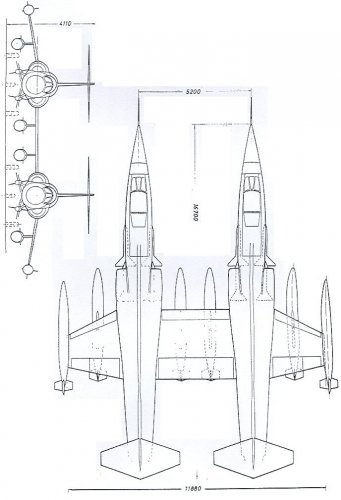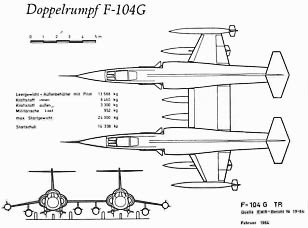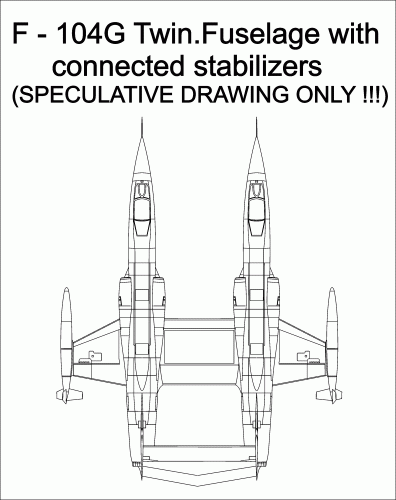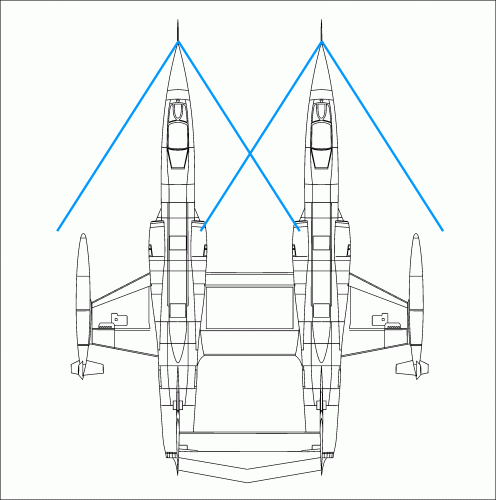- Joined
- 25 July 2007
- Messages
- 3,867
- Reaction score
- 3,163
Justo Miranda said:I have some unknown drawing to me. Could anyone help me identify it, please?
[picture re-attached below — Mod.]
This is the F-104G-TR 'Twin Starfighter'. And opinion seems to be divided as to whether this was a genuine project or not.
According to web sources, the F-104G-TR was to be an escort fighter using a maximum of Starfighter parts. Entwicklungsring Süd did the study. A navigator was to sit in one of the two cockpits (not clear on which one).
I don't think that this concept got very far ... which is probably just as well.




